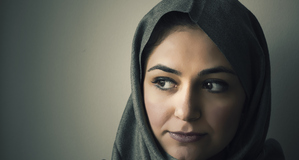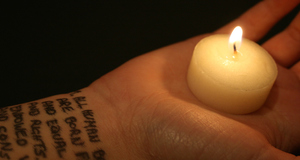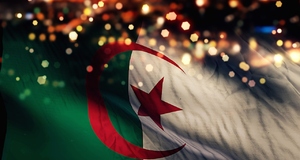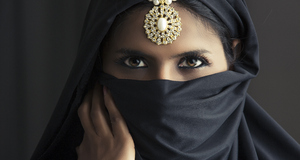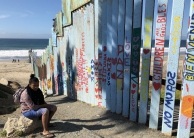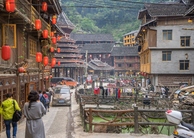Featured Article:Mob Violence Against Women in Algeria: A Historical Case AnalysisThe History of Mob Violence Against WomenMob violence against women occurred a number of times throughout history in Algeria (Bayat, 2003; Pereira, 2012). After Algeria’s independence from France (1962), the situation for women got worse as the government began to increasingly rely upon religious doctrine to govern the country (Jansen, 2004; Turshen, 2002). With the rise of industrialization, in many areas of Algeria, women often entered the work force to provide for themselves and their family (Skalli, 2006; Zack, 2003). In the early 1970’s, however, women who were employed in factories, located in the northwest cities of Algeria, became targets of mob violence (Llyod, 2002; Pereira, 2012). Women were stoned and prevented from entering their places of employment (The Dossiers, 2000). In reaction to these violent situations, authorities temporarily closed down these factories (Spencer & Chesler, 2007). Upon re-opening the police had to provide escorts and protection to these women workers in order to prevent future violence (The Dossiers, 2000). This case shows the history of male violence in groups against women who fell outside of the established gender roles. In June of 1989, a local town in the southern city of Algeria, known as Ouargla, received a petition containing 197 signatures, demanding that the neighborhood clear the three women living there who were viewed as having inappropriate lifestyles (Lazreg, 1988). Young groups of boys were mobilized, by the FIS, to harass these women in an effort to cleanse the town from these women’s unwanted behavior (Hensman, 1995). After months of harassment these women continued to refuse to leave the community, and were attacked by a group of over ten men who were on a mission to purify the neighborhood (Pereira, 2012). This was the first reported incident of religiously motivated, collective, male violence against women in the hands of men working outside the FIS (The Dossiers, 2000).One woman who refused to leave the town of Ouargla, after the above-mentioned June 1989 mob attacks, and was directly impacted by mob violence was Oum Ali (Lloyd, 2003). Her husband decided to abandon Ali and filed for a divorce. Ali, illiterate and struggling to find a job, was not receiving any child support from her ex-husband, based on the rules dictated under the Family Code (Jansen, 2004; Lazreg, 1988). She was accused of prostitution by fundamentalists and attacked based on the belief that she was affecting the purity and morality of Muslims in the town (Moghadam, 2003). Oum Ali, who was living on her own with her seven children, was burnt to death at her home by a mob late at night (Bennoune, 1995). Ourda’s youngest child, four-years-old at the time, also died in the fire. As a result of this attack, 13 men were arrested, yet they were fully supported by fundamentalists who favored these men’s actions claiming that these attacks were a justifiable step to reclaim social purity (Lloyd, 2006). Reports conducted after the attacks found that the police failed to intervene, when the attacks were occurring (The Dossiers, 2000). Algerian feminist Khaleda Messoudi claimed that these displays were clearly part of the “war against women as part of the sexual apartheid in Algeria” (The Dossiers, 2000, p. 139). Media reports gathered information about this act of violence as being based on Islamist fundamentalists’ claims that women, such as Ali, who lived alone and were whores, posed a threat to the stability of society (Mayar, 1995; Salhi, 2003). This violent attack and related ideologies quickly spread and were followed by a number of similar individual attacks on women in other Algerian cities (Bayat, 2003; Horne, 2012). In 1992, three years after the first reported attack of mob violence against women, Islamic fundamentalists sparked violent terrorist campaigns seeking to enforce a strict compliance from women of Shari’a law (Islamic law) (Hosseini, 2006; Mir-Hosseini, 2006). Shari’a law has a large influence on the legal codes and practices of Algeria have an influence on the adoption of the Family Code (Jansen, 2004; Lloyd, 2003). It allows the governance of personal status, regulations pertaining to marriage and gender roles (Nagel, 1998; Skalli, 2006). Interpretations of this law vary depending on the individual and even community beliefs (Miller, 2011). Islamic Extremists who believed that the veil was an essential part of displaying a women’s purity felt the need to enforce these practices using forms of violence if necessary (Faksh, 1997; Galadari, 2012). Many male citizens, some of whom followed the lead of Islamic Extremists, declared the need for women to wear the veil (Hijab), placing death threats on them, especially feminist leaders speaking against the basic civil rights granted to women (Salhi, 2003; Charrad, 2001 ). Some Algerian citizens considered the Hijab to be a symbol containing a deeper meaning, which represented privacy, morality and modesty (Galadari, 2012). Incidents of harassment increased as time went on and women who refused to wear the veil, in the workplace or those who lived alone were subjected to punitive forms of violence (Turshen, 2002). Mob Attacks Against Women in Hassi MessaoudOn the night of Friday July 13th 2001, in the city of Saharan in Hassi Messaoud, a mob of approximately 300 men, who had just finished a sermon at the local mosque led by an Islamist imam, known as Amar Taleb, attacked a working woman in the city of Bouamama (Lloyd, 2006). The city of Bouamama was composed of women hired as cleaners, cooks and secretaries to fulfill the employment demands of foreign oil companies (Siegfried & Ait, 2010). Local newspaper reports indicated that the women had been imported from Northwestern cities, in Algeria, in an effort to employ those in poverty stricken areas (Salome, 2010). Many of these people, mainly women, were willing to work because the scarcity of jobs, in non-industrialized areas, was minimal. Those who witnessed the attacks stated that the men were accusing these women of what they believed to be ‘immoral’ behavior (Lloyd, 2006). The women were targeted because they were living alone without a male guardian known as “Wali” (based on Maliki tradition) and were considered to be prostitutes (Kelly & Breslin, 2010; Moghadam, 1991). The mob of men, during their attacks, tortured, stabbed, raped and killed women in the area. Women’s houses were looted and set on fire until security finally intervened at three o’clock Saturday morning (Lezzar, 2009). Over the course of five hours, July 13th 2001, became a day of massive attacks on Algerian women (Siegfried & Ait, 2010). 95 women had been attacked by mobs of men. To protect and prevent ‘possible attacks’ on other women, the authorities relocated women in prisons and shelters (Lloyd, 2006). The continued formation of male mobs and the collective male violence targeting women continued from July 14-16th in other areas surrounding Hassi Messaoud, particularly ‘area 136’ and ‘area 200’ (Pereira, 2012). In other words the use of gendered violence spread throughout Algeria. Further attacks occurred, on July 17th and again on July 23-24th, in the Southern city of Algeria called Tebessa (Majumdar & Saad, 2005). During these attacks the scope of violence increased as mobs of men targeted not only the houses of single women, as they did in the first attacks, but also shops owned by women (Siegfried & Ait, 2010). After the incidents, many independent journalists reported that 9-40 men, who were identified participants, had been arrested and were awaiting trial (The Dossiers, 2000). Dozens of women were attacked and many were hospitalized, including six in critical condition (Siegfried & Ait, 2010). La Tribune, a local newspaper, reported that a total of four to six deaths had occurred as a result of the attacks, yet the authorities denied these incidents (Siegfried & Ait, 2010). Many witnesses to the attacks described seeing female bodies scattered in the street. In August of that year, the association SOS Femmes en Détresse reported that there were, in fact, multiple women killed in the attacks, which contested previous government reports (Bennoune, 1995). The protests in the Berber areas of Algeria, once again, led to the spread of mob attacks throughout the country. President Bouteflika spoke out against the attacks by warning women that they should not provoke the Islamists by drawing attention to themselves (Holm, 2005; Glasse, 2008). Even though concerns have arisen, there has been little media attention given to the attacks in Hassi Messaoud and surrounding cities (Siegfried & Ait, 2010). Some Algerians have seen failure to properly acknowledge these incidents as a simplistic representation of the underlying problems facing Algerian women within local communities (Bayat, 2003; Pereira, 2012). Attacks against women continued, with a series of similar crimes against women living alone, in Tebessa, Remchi, Ouargla and Bordj (Spencer & Chesler, 2007). To date, all of these incidents have failed to properly apply Algerian laws to punish the offenders and those punished received minimal punishment for their actions. The Court CaseAuthorities brought forward many of the men, who had participated in the Hassi Messaoud mob attacks, for prosecution. Amar Taleb (who was said to be the leader of the group) and a total of 40 other men who were described, by authorities and witnesses, as taking an active role in these forms of violence were among those arrested (Anis, 2010). News media outlets reported that 9 men were arrested at the scene after the attacks had stopped (WLUM, 2000). Out of the 95 reported women who were attacked, 39 decided to file charges and only three were present at the trial (Pereira, 2012). While the trial was pending, Amar Taleb continued to preach at the mosque. In 2004, the victims, who sought justice, were unable to obtain legal representation, even though the Ministry of Solidarity had promised to appoint them with such representation (Lloyd, 2006). Out of the 32 men brought to trial, a majority of them had the charges against them waived (Anis, 2010; WLUM, 2000). A process of appeal commenced, in December of 2004, only to be postponed to the following year so that the court could have all members accused in court together (Pereira, 2012). This was done in order to conduct a collective trial against all the men. When the trial was reopened, six of the attackers were present, while the other individuals failed to appear. All of the women who had filed lawsuits encountered pressure, and, in many instances, threatened during the court proceedings (Anis, 2010). A majority of these women, other than three, withdrew their lawsuits (WLUM, 2000). In court, three of the men were acquitted and three of the men were sentenced to three, six and eight years in prison (Pereira, 2012). The men who failed to appear at the trial were sentenced in absentia (Lloyd, 2006). As a result, 20 of them were sentenced to 20 years, four were sentenced to 10 years and one was sentenced to five years (Anis, 2010). While these court rulings may seem justified, only three out of the total number of men convicted had to actually serve their sentences (Pereira, 2012). The Status and Spacing of WomenThe status and the social spatial arrangements of women in Algeria provide a better understanding of the ideological foundations present since the state’s independence. Some scholars have understood the emerging reports of violent attacks of women as a result of the National Liberation Front (FLN) implementing a specific policy after Algeria’s independence (Faksh, 1997; Spencer & Chesler, 2007). The government’s attention and emphasis on industrialization and education, while ignoring other social needs, are contributing factors as to the increased violence against women (Mayar, 1995; Slyomovics, 1995). With the state’s encouragement of emerging markets, women’s presence within public spaces became increasingly common (Afsaruddin & Ameri, 1999; Skalli, 2006). The shift in spatial arrangements of women into schools and factories created a new wave of modernization, shocking Muslim traditionalists. Some individual religious values viewed this change in women’s spatial arrangements as challenging the social order of gender (Jansen, 2004; Slyomovics, 1995). Perceiving women as intruders of what was deemed to be masculine space, many male citizens of Algeria responded negatively. The expanding spatial arrangements of women, in Algeria, was seen as illegitimate and harming the established balance of gender roles and statuses (Afsaruddin & Ameri, 1999). Similar to the outside world, the interior spaces, within the local factories, were viewed as having the same gender based social constructions (Skalli, 2006). Statistics on state-run factories, gathered by Tlemcen’s report, in 2004, identified that factory positions held by women were temporary and commonly compiled of unmarried women, 20-30 years old. When comparing this data to the characteristics of women victims, of mob attacks, the connection is essential as it shows common perceptions about all women, particularly female workers (The Dossiers, 2000). The gendered spacial arrangements, in Algeria are based on gender constructions, which have been created by a series of complex economic, historical and religious ideologies (Holt, 2003; Nagel, 1998; Jansen, 2004). Violence against working and single women by mobs of men was viewed as punishment, according to Islamic extremists, for failing to conform to the established gendered norms (Afsaruddin & Ameri, 1999; Slyomovics, 1995). In the end, it is not only women who were subjected to these specific normalized spatial arrangements, but men as well (Nagel, 1998). The Rise of Women's Rights AdvocacyIt is important to understand the development of women’s rights groups within Algeria (Kelly & Breslin, 2010). Their experiences are based on unique perspectives contributing to feminist debates based on differences in culture, history and nationality (Cohen, 2000; Lazreg, 1988). Women’s roles, within Algeria, are shaped by many symbolic and structural factors, such as colonial domination, nationalism, changes in demographics and capitalist economic shift (Hatem, 1986; Woodhull, 1991). This has led to the creation of a number of socialist development policies, which have transformed these social relationships (Lazreg, 1988; Nagel, 1998). Before the war, leading to Algeria’s liberation in 1962, women’s associations and advocacy groups were beginning to form (Charrad, 2001). From 1934-1962 the creation of three women’s associations occurred: the Association of Muslim Women of Algeria, the Algerian People’s Party (PPA) and the Union of Algerian Women (Bouatta, 1997; Horne, 2012). In 1962, despite the emphasis placed on women to maintain a more customary role within Algerian society, the National Union of Algerian Women was created (Turshen, 2002). They were part of the government formed socialist approach. The union held its first march on March 8th 1965, where over 6,000 women gathered to participate in celebrating International Women’s Day (Salhi, 2003). With the growth of women’s union in Algeria, the potential for social change positively affecting women’s rights was emerging (Kelly & Breslin, 2010). In 1976 the National Charter made a pivotal step towards guaranteeing legal equality rights between both women and men and acknowledging women’s rights to education (Charrad, 2001; Hatem, 1986). The Charter also emphasized the cultural, economic and social facets of women’s roles within Algeria (Majumdar & Saad, 2005; Slyomovics, 1995). Regardless of the social achievements made, recognizing the rights of women, as of 1993, women employed outside the home continued to fall below the number of those in Morocco and Tunisia (Apostolopulos, Sönmez & Dallen, 2001). Although Algerian women have encountered increased violence in times of social development, many women have been successful in holding an elective office and creating an assembly of women parliamentarians who continue to fight for legislative reforms (Kelly & Breslin, 2010). The failure of the government to recognize women who have been raped by terrorists, as legal victims, denies them protection, which has been one of the major issues addressed by these women within the government (Vrdoljak, 2013). The number of known Algerian women survivors of rape by terrorists is 2,029 (Turshen, 2002). Women who have survived are continuing to take steps towards reaching equality in Algeria. According to the 2010 Algerian statistics, women represent over half of the university staff, 30 per cent of judges, and account for one-third of the workforce (Vrdoljak, 2013). The government has also seen a rise in women representatives, which has reached 30 seats in parliament, three of whom are ministers of state (Turshen, 2002). In light of past struggles faced by women in Algeria, conditions continue to advance, allowing the placement of women within society to change (Bourouh, 2004).Continued on Next Page » Suggested Reading from Inquiries Journal
Inquiries Journal provides undergraduate and graduate students around the world a platform for the wide dissemination of academic work over a range of core disciplines. Representing the work of students from hundreds of institutions around the globe, Inquiries Journal's large database of academic articles is completely free. Learn more | Blog | Submit Latest in Law & Justice |








